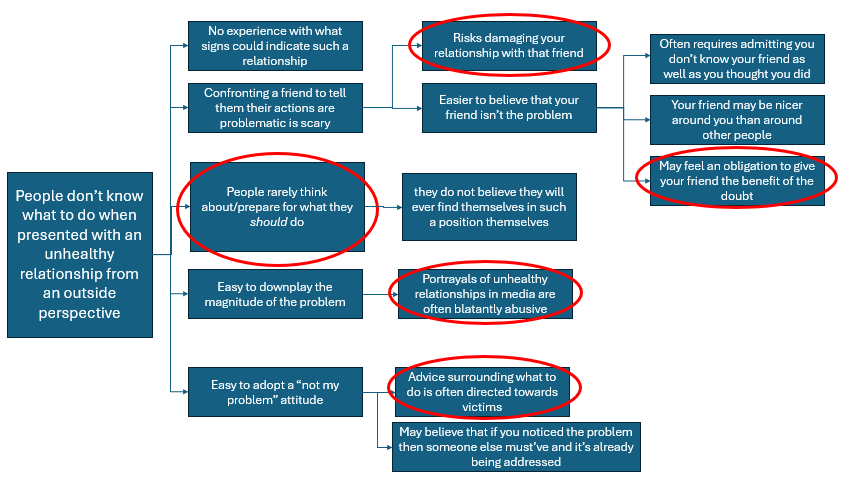Behind The Screen - Game Design
The game premise, goals, and rules
As a DM for a group of friends, you must make decisions that provide a fun experience for your friends. There is no failure state for the game. If you empathize with the game's characters, your only goal is to make the decisions that will result in the people you care about being happy.
Mechanics
The game's only mechanic is selecting choices from a list of options given to the player during various events throughout the story. The 3 types of choices the player makes are:
- Deciding how the events of the D&D campaign unfold
- Deciding what to tell your friends regarding their actions
- Deciding what direct actions to take to address a problem
Procedural Rhetoric
The overall philosophy we were aiming for was to not provide a set of options that are either 'right' or 'wrong'. As the subject is very complex and every situation is unique, we did not want to encourage or discourage a particular response (other than actively ignoring the issue, which either gets other characters upset with you or is not presented as an option at all). The intent was also not to encourage the players to try to get every ending and pick which one they like the most. Ideally, players will play the game once, reflect on the actions they took, acknowledge that taking action had a positive impact, and allow them to reflect (after they have finished the game) on whether or not those choices were the best ones they could have made. Our hope is that if players experience a similar situation later in life, they will at least put more thought into their choices and be more confident making these difficult decisions. This is represented in the gameplay in the following ways:
- There are multiple 'endings', but none are 'good' or 'bad'.
- There is no list of endings or branching path diagram that would encourage repeated playthroughs.
- There is no ability to make a save at a branching point and load back to it later.
Cause Map Diagram / Root Cause Analysis

Scrapped system
We had brainstormed an 'interest' system for the game:
- Each character would have an internal variable tracking their current interest level
- A character's level of interest would be exposed through their body language and dialogue
- For example, a character who is not interested might be looking at their phone or comment that something is boring
- Choices you make would affect each character's interest level
- As DM, you would have to learn how to keep each character interested
- If characters are interested enough, they would request to speak to you one-on-one after sessions
- This would give you an opportunity to learn more about their opinion on problems within the group
Ultimately, this system was scrapped since we felt that it wasn't necessary in order to tell the story that we wanted to tell with the game. We ended up scripting one-on-one talks with characters into the game so that most talks occur regardless of what decisions have been made. We felt that this was the right decision due to our short production timeframe (3 weeks) and because we had important plot points occur during these one-on-one talks that should not be missed.
